Dyfais USB Ddim yn Gweithio yn Windows 10 [Datryswyd]
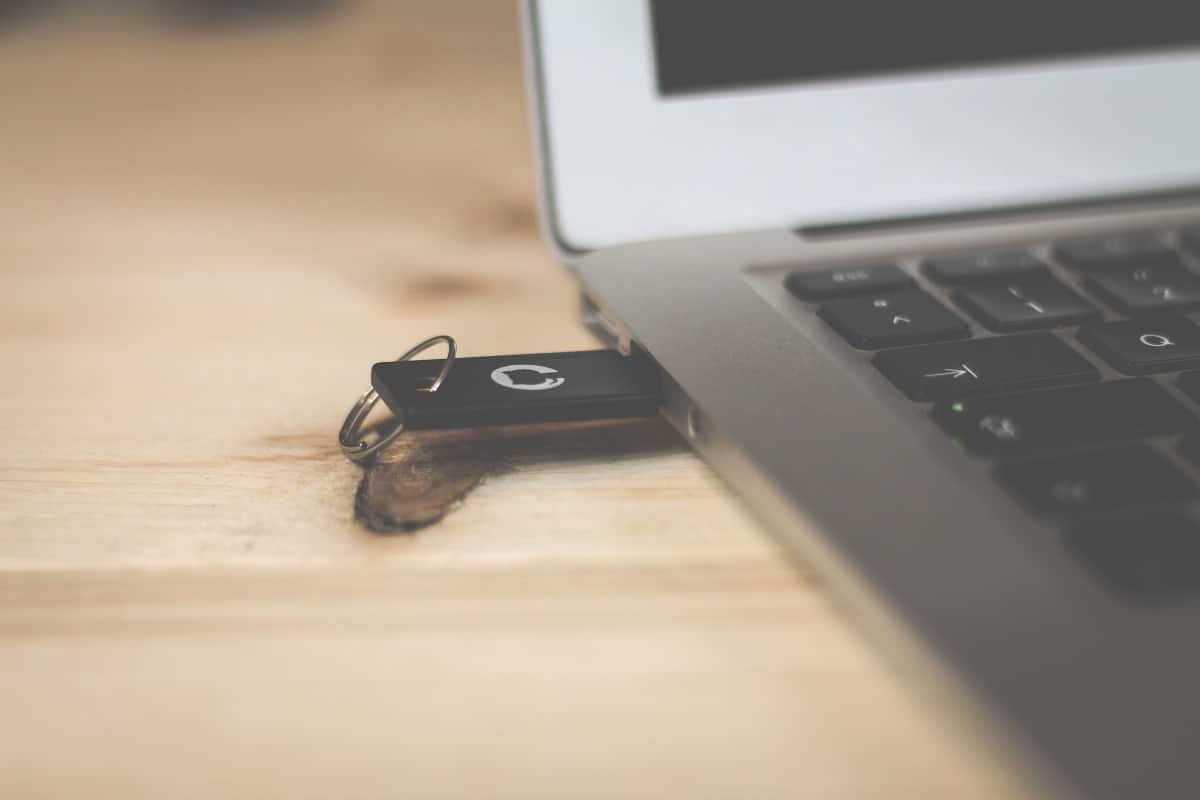
USB Device not working in Windows 10 is a common problem that arises when dealing with USB. Typically USB Device not working error is shown after a USB device such as a printer, scanner, External drive, Hard disk, or Pen drive is connected to the computer. Sometimes when this error occurs, the Device Manager may list an “Unkown Device” in Universal Serial Bus controllers.
In this guide, you can find all information regarding the USB Device not working in Windows 10 issue. After spending a lot of time we have come up with these few working solutions on how to fix USB Device not working issue. Please try all the methods listed below, before you come to any conclusion.
![Fix USB Device Not Working in Windows 10 [SOLVED]](https://lbsite.org/wp-content/uploads/2023/01/Fix-USB-Device-Not-Working-in-Windows-10-SOLVED.jpg)
Different types of error you may receive when dealing with USB Device not working:
- USB Device not recognized
- Unrecognized USB device in Device Manager
- USB Device driver software was not successfully installed
- Windows has stopped this device because it has reported problems (Code 43).
- Windows can’t stop your “Generic volume” device because a program is still using it.
![Fix USB Device Not Working in Windows 10 [SOLVED]](https://lbsite.org/wp-content/uploads/2023/01/Fix-USB-not-working-Windows-10.png)
Fix USB Device Not Working in Windows 10 [SOLVED]
Common Causes of the USB Device not working error:
- Corrupted or outdated USB drivers.
- The USB device may have malfunctioned.
- Host controller hardware malfunction.
- The computer does not support USB 2.0 or USB 3.0
- USB Generic Hub drivers are not compatible or are corrupted.
Now let’s see How to Fix USB Device Not Working in Windows 10 with the help of the below-listed troubleshooting guide.
Method 1: Disable EnhancedPowerManagementEnabled
1. Press Windows Key + R and type “devmgmt.msc” yna pwyswch enter i agor y Rheolwr Dyfais.
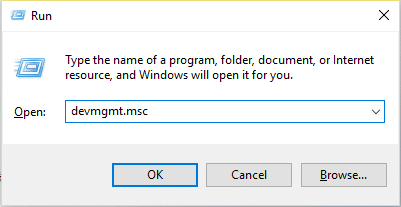
2. Now expand Rheolwyr Bws Serial Cyffredinol.
3. Next, plug in your USB device which is experiencing a problem, and notice the change in the Universal Serial Bus controllers i.e. you will see the list updated with your Device.
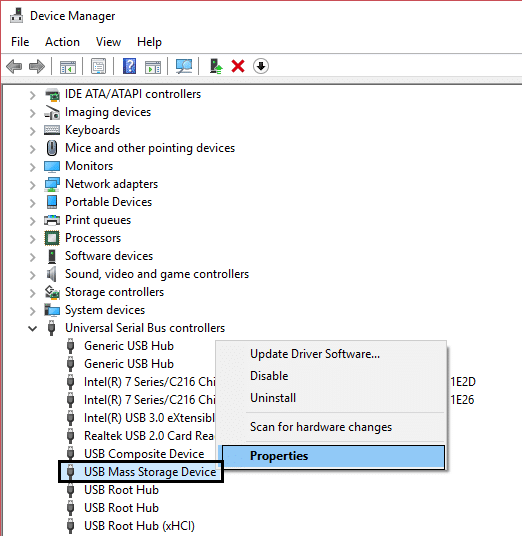
Nodyn: You may have to use hit and trial in order to identify your device and in doing so you have to connect/disconnect your USB device multiple times. Always use the “Safely remove” option when disconnecting your USB device.
4. After you have identified your device in Universal Serial Bus controllers, right-click on it and select eiddo.
5. Next switch to Details tab and from Property drop-down select “Device instance path."
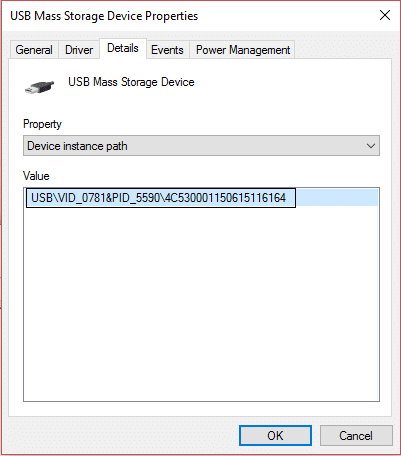
6. Nodwch i lawr y value of the Device instance path because we will need it further or right-click and copy it.
7. Gwasgwch Ffenestri Allweddol + R a theipiwch “regedit” then hit enter to open Registry Editor.

8. Navigate to the following:
HKEY_LOCAL_MACHINESYSTEMCurrentControlSetEnumUSB<Device Instance Path>Device Parameters
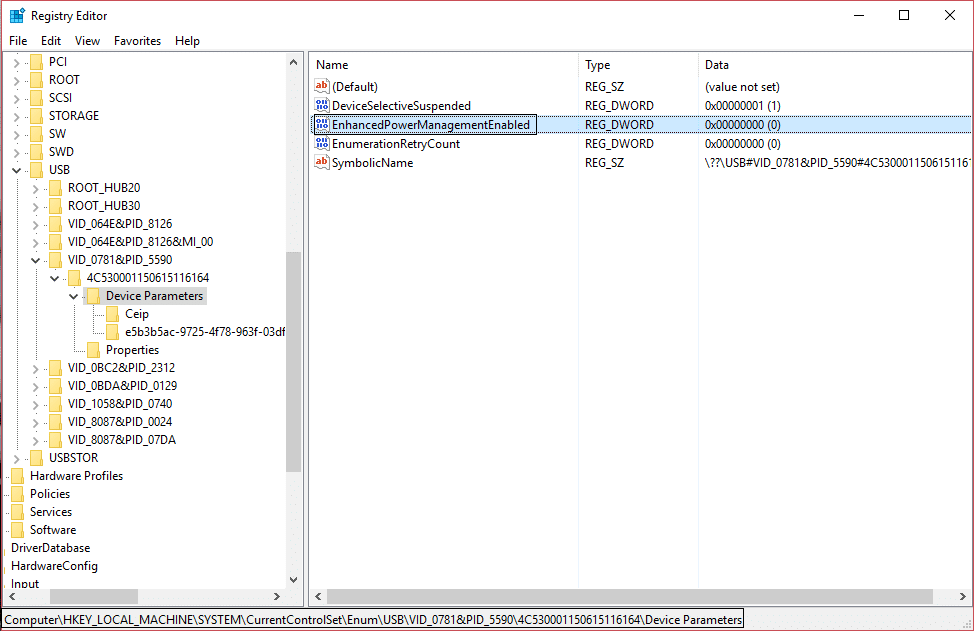
9. Now search for the DWORD EnhancedPowerManagementEnabled and Double click on it.
Nodyn: If you couldn’t find the DWORD create one by right-click, then select New and then DWORD (32-bit) value. And name the DWORD as “EnhancedPowerManagementEnabled” then enter 0 in the value and click OK.
10. Newid ei werth o 1 0 i a chlicio OK.
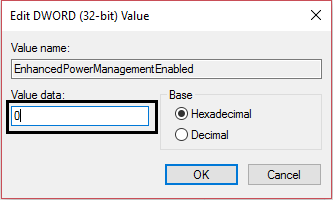
11. You may now close the Registry Editor as well as Device Manager.
12. Reboot your PC to apply changes and this may be able to fix USB Device Not Working in Windows 10 issue.
Method 2: Run Hardware and Device Troubleshooter
1. Open Control Panel using the Windows search bar.

2. Dewiswch Panel Rheoli from the search list. The Control Panel window will open up.

3. Chwilio am datrys problemau using the search bar on the top right corner of the Control Panel screen.

4. Cliciwch ar Datrys Problemau o ganlyniad y chwiliad.
5. The troubleshooting window will open up.

6. Cliciwch ar Hardware and Sound option.

7. Under Hardware and Sound, click on Configure a device option.

8. You will be prompted to find and enter the administrator password. Enter the password and then click on the confirmation.
9. The Hardware and Devices Troubleshooter window will open up.

10. Cliciwch ar y Botwm nesaf that will be on the bottom of the screen to run the Hardware and Devices troubleshooter.

11. The troubleshooter will start detecting issues. If issues are found on your system, then you will be prompted to fix the issues.
Method 3: Update your Device Driver
1. Gwasgwch Ffenestri Allweddol + R a theipiwch “devmgmt.msc” yna pwyswch enter i agor y Rheolwr Dyfais.

2. Now expand Rheolwyr Bws Serial Cyffredinol.
3. Next right-click on the device which you earlier identified in Method 1 and select “Diweddaru Meddalwedd Gyrwyr."
4. Dewiswch “Chwilio'n awtomatig am feddalwedd gyrrwr wedi'i ddiweddaru."
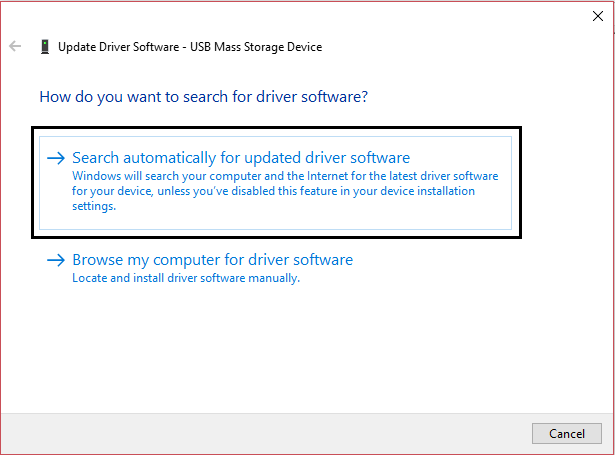
5. Let the process finish and see if you’re able to fix the issue.
6. If not, then again repeat step 3. This time select “Porwch fy nghyfrifiadur ar gyfer meddalwedd gyrwyr."
7. Dewiswch “Gadewch imi ddewis o restr o yrwyr dyfeisiau ar fy nghyfrifiadur."
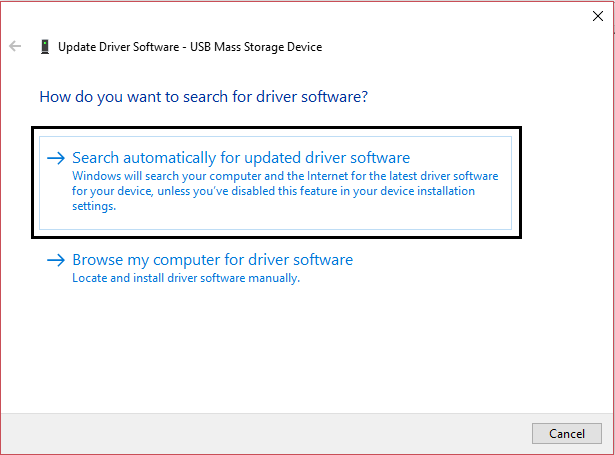
8. Nesaf, dewiswch Dyfais Storio Torfol USB a chliciwch ar Next.
Nodyn: Make sure Show compatible hardware is checked.
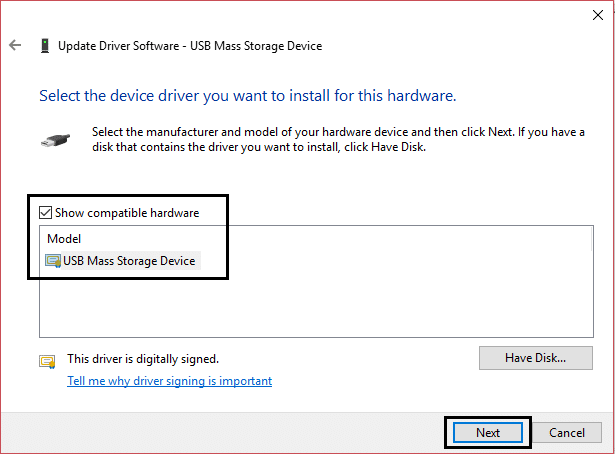
9. Click close and also close the Device Manager.
10. Reboot to apply your changes and this may be able to Fix USB Device Not Working in Windows 10.
Method 4: Automatically diagnose and fix Windows USB problems
1. Navigate to this link a chliciwch ar y botwm Lawrlwytho.
2. When the page has finished loading, scroll down, and click Lawrlwythwch.

3. Once the file is downloaded, double-click the file to open the Windows USB Troubleshooter.
4. Click next and let Windows USB Troubleshooter run.
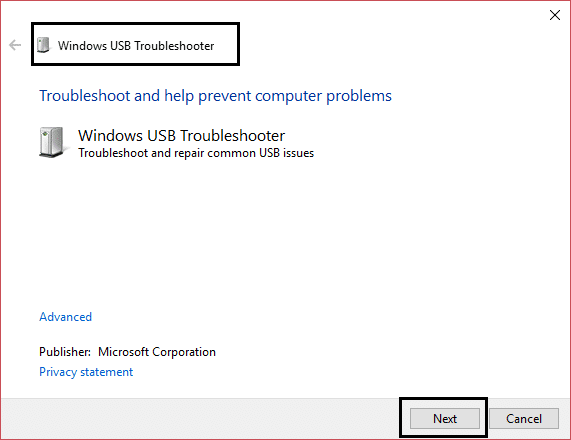
5. IF you have any attached devices then USB Troubleshooter will ask for confirmation to eject them.
6. Check the USB device connected to your PC and click Next.
7. If the problem is found, click on Cymhwyso'r atgyweiriad hwn.
8. Ailgychwyn eich PC.
Method 5: Install the latest Intel device drivers.
1. Dadlwythwch y Cyfleustodau Diweddaru Gyrwyr Intel.
2. Rhedeg Driver Update Utility a chliciwch Nesaf.
3. Derbyn y cytundeb trwydded a chliciwch Gosod.
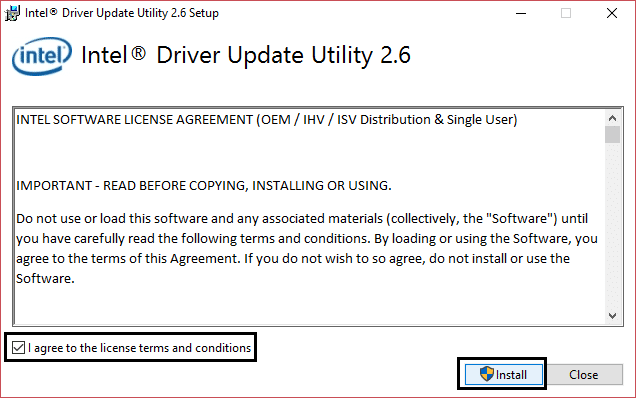
4. Wait for Intel Driver Update Utility to initialize and install all required programs and files.
5. After System Update has finished click Lansio.
6. Nawr dewiswch Dechreuwch Sganio and when the driver scan is completed, click on Lawrlwythwch.
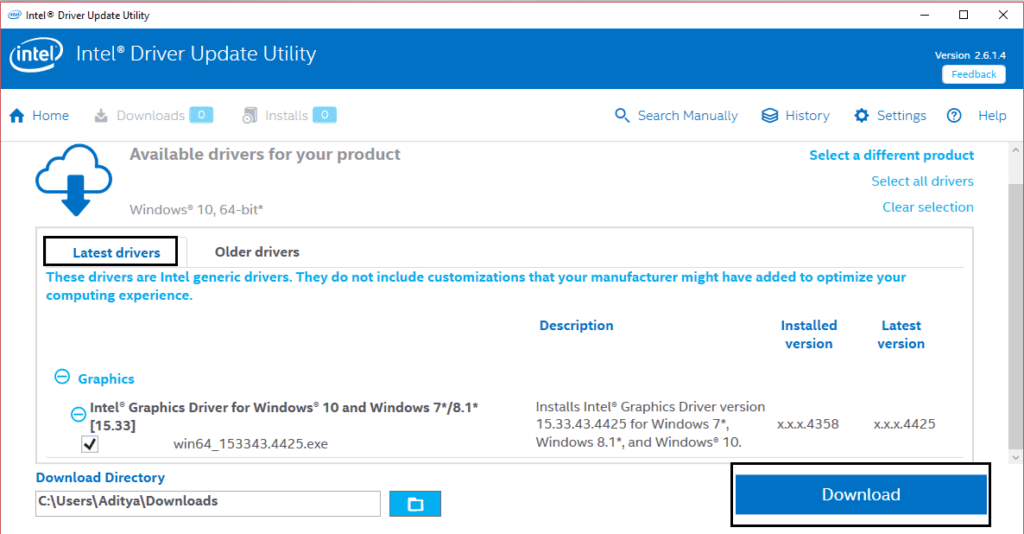
7. All the Drivers will be downloaded to your default download directory mentioned in the bottom left.
8. Yn olaf, cliciwch ar Gosod to install the latest Intel drivers for your PC.
9. When the driver installation is completed, reboot your computer.
Gweld a ydych chi'n gallu fix USB Device Not Working in Windows 10 issue, os na, parhewch â'r dull nesaf.
Method 6: Run Windows Disk Error Checking
1. Gwasgwch Ffenestri Allweddol + R yna teipiwch diskmgmt.msc a daro Enter.
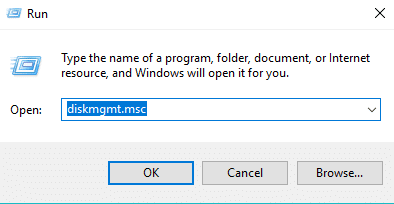
2. Next right-click on your USB cathrena a dewis Properties.
3. Nawr ewch i'r Tools tab inside properties.
4. Cliciwch ar Check-in Error Checking.
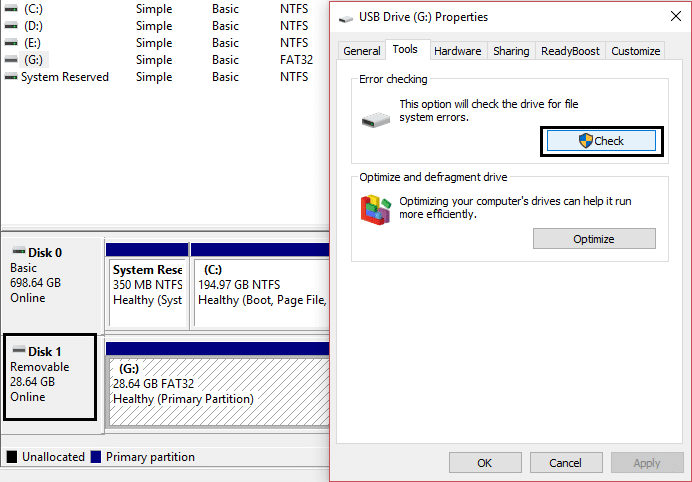
5. When the USB Error Checking is completed, close everything, and Reboot.
Argymhellir ichi:
That’s it, you have successfully Fix USB Device Not Working in Windows 10 issue. I hope one of the above-listed methods has fixed your problem/issue successfully and if you still have any queries regarding this guide feel free to ask them in comments. And share this post with your family or friends to help them in dealing with USB errors.